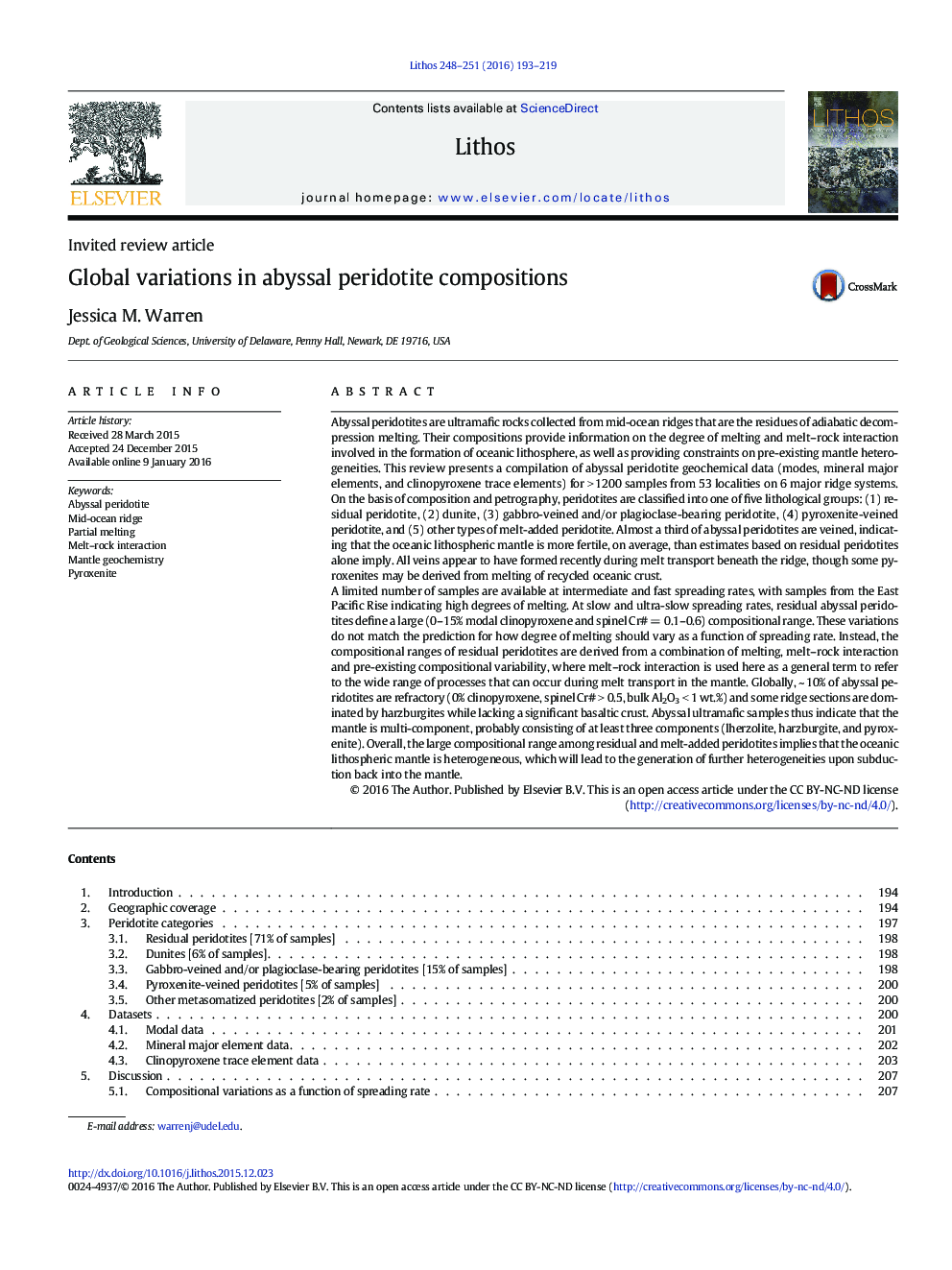| Article ID | Journal | Published Year | Pages | File Type |
|---|---|---|---|---|
| 6440377 | Lithos | 2016 | 27 Pages |
Abstract
A limited number of samples are available at intermediate and fast spreading rates, with samples from the East Pacific Rise indicating high degrees of melting. At slow and ultra-slow spreading rates, residual abyssal peridotites define a large (0-15% modal clinopyroxene and spinel Cr#Â =Â 0.1-0.6) compositional range. These variations do not match the prediction for how degree of melting should vary as a function of spreading rate. Instead, the compositional ranges of residual peridotites are derived from a combination of melting, melt-rock interaction and pre-existing compositional variability, where melt-rock interaction is used here as a general term to refer to the wide range of processes that can occur during melt transport in the mantle. Globally, ~Â 10% of abyssal peridotites are refractory (0% clinopyroxene, spinel Cr#Â >Â 0.5, bulk Al2O3Â <Â 1Â wt.%) and some ridge sections are dominated by harzburgites while lacking a significant basaltic crust. Abyssal ultramafic samples thus indicate that the mantle is multi-component, probably consisting of at least three components (lherzolite, harzburgite, and pyroxenite). Overall, the large compositional range among residual and melt-added peridotites implies that the oceanic lithospheric mantle is heterogeneous, which will lead to the generation of further heterogeneities upon subduction back into the mantle.
Related Topics
Physical Sciences and Engineering
Earth and Planetary Sciences
Geochemistry and Petrology
Authors
Jessica M. Warren,
